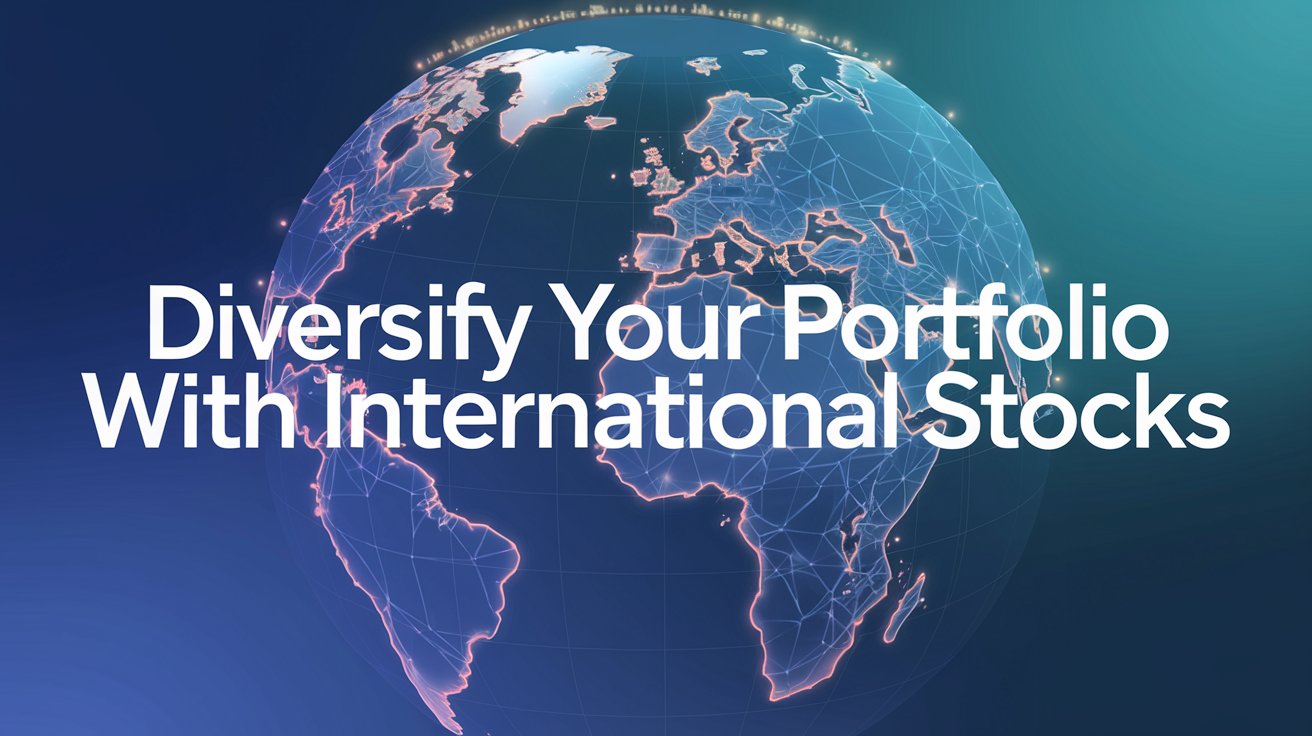In today’s interconnected global economy, diversifying your investment portfolio with international stocks has become more important than ever. As we navigate the complexities of the 2024 financial landscape, incorporating foreign equities can provide numerous benefits, including risk reduction, exposure to emerging markets, and potential for higher returns. This article will guide you through the process of diversifying your portfolio with international stocks, offering insights and strategies to help you make informed investment decisions.
Understanding the Importance of International Diversification
Reducing Portfolio Risk
One of the primary reasons to invest in international stocks is to reduce overall portfolio risk. By spreading your investments across different countries and economies, you can mitigate the impact of region-specific economic downturns or political instability on your portfolio.
Accessing Global Growth Opportunities
Many of the world’s fastest-growing economies are outside the United States. By investing in international stocks, you gain exposure to these high-growth markets and the potential for substantial returns that may not be available domestically.
Currency Diversification
Investing in foreign stocks also provides a hedge against currency fluctuations. When the U.S. dollar weakens, returns from international investments can increase when converted back to dollars.
Strategies for Diversifying with International Stocks
1. Determine Your Allocation
The first step in diversifying your portfolio is deciding how much of your investments should be allocated to international stocks. While there’s no one-size-fits-all approach, many financial advisors recommend allocating 20-40% of your equity portfolio to international stocks.
2. Choose Your Investment Vehicles
There are several ways to invest in international stocks:
- Individual Stocks: Directly purchasing shares of foreign companies
- American Depositary Receipts (ADRs): U.S.-traded securities representing ownership in shares of a foreign company
- Mutual Funds: Professionally managed funds that invest in a diversified portfolio of international stocks
- Exchange-Traded Funds (ETFs): Funds that track international stock indices and trade on U.S. exchanges
3. Consider Developed vs. Emerging Markets
When diversifying internationally, it’s important to balance investments between developed and emerging markets:
- Developed Markets: Countries with established economies and financial systems (e.g., Japan, Germany, UK)
- Emerging Markets: Rapidly growing economies with developing financial markets (e.g., China, India, Brazil)
A balanced approach might involve allocating 60-70% to developed markets and 30-40% to emerging markets within your international portfolio.
4. Research and Due Diligence
Before investing in any international stock or fund, conduct thorough research:
- Analyze the country’s economic and political stability
- Understand the company’s financial health and growth prospects
- Consider industry trends and competitive landscape
- Review the fund’s performance history, expense ratio, and management team
5. Monitor and Rebalance
Regularly review your international investments and rebalance your portfolio as needed. This ensures that your asset allocation remains aligned with your investment goals and risk tolerance.
Top International Markets to Consider in 2024
| Country/Region | Key Characteristics | Potential Opportunities |
|---|---|---|
| China | Large consumer market, tech innovation | E-commerce, renewable energy |
| India | Rapidly growing economy, young population | IT services, consumer goods |
| European Union | Stable economies, strong regulations | Luxury goods, pharmaceuticals |
| Japan | Advanced technology, aging population | Robotics, healthcare |
| Southeast Asia | Emerging economies, growing middle class | Fintech, infrastructure |
Challenges and Risks of International Investing
While international diversification offers numerous benefits, it’s important to be aware of the potential challenges:
Currency Risk
Fluctuations in exchange rates can impact your returns when converting foreign investments back to U.S. dollars.
Political and Economic Instability
Some countries may face political upheaval or economic crises that can negatively affect your investments.
Regulatory Differences
Different countries have varying levels of financial regulation and corporate governance standards, which can impact investor protections.
Information Asymmetry
It may be more challenging to obtain accurate and timely information about foreign companies compared to domestic ones.
Tools and Resources for International Investing
To help navigate the complexities of international investing, consider utilizing the following resources:
- Financial news websites with global coverage (e.g., Financial Times, Bloomberg)
- International stock screeners and analysis tools
- Country-specific economic reports from organizations like the World Bank or IMF
- Global market research from reputable investment firms
- Currency conversion calculators and tracking tools
Tax Considerations for International Investments
Investing in international stocks can have tax implications:
- Foreign tax credits may be available for taxes paid to foreign governments
- Be aware of potential withholding taxes on dividends from foreign stocks
- Consult with a tax professional to understand the specific tax implications for your situation
Conclusion
Diversifying your portfolio with international stocks in 2024 can provide significant benefits, including reduced risk, exposure to global growth opportunities, and potential for higher returns. By carefully considering your allocation, choosing appropriate investment vehicles, and balancing between developed and emerging markets, you can create a well-rounded international portfolio.
Remember to conduct thorough research, stay informed about global economic trends, and regularly review and rebalance your investments. While international investing comes with its own set of challenges and risks, the potential rewards make it a valuable component of a diversified investment strategy.
As you embark on your international investing journey, consider starting small and gradually increasing your exposure as you become more comfortable with the nuances of global markets. With patience, diligence, and a long-term perspective, incorporating international stocks into your portfolio can help you achieve your financial goals and navigate the ever-changing landscape of the global economy in 2024 and beyond.

